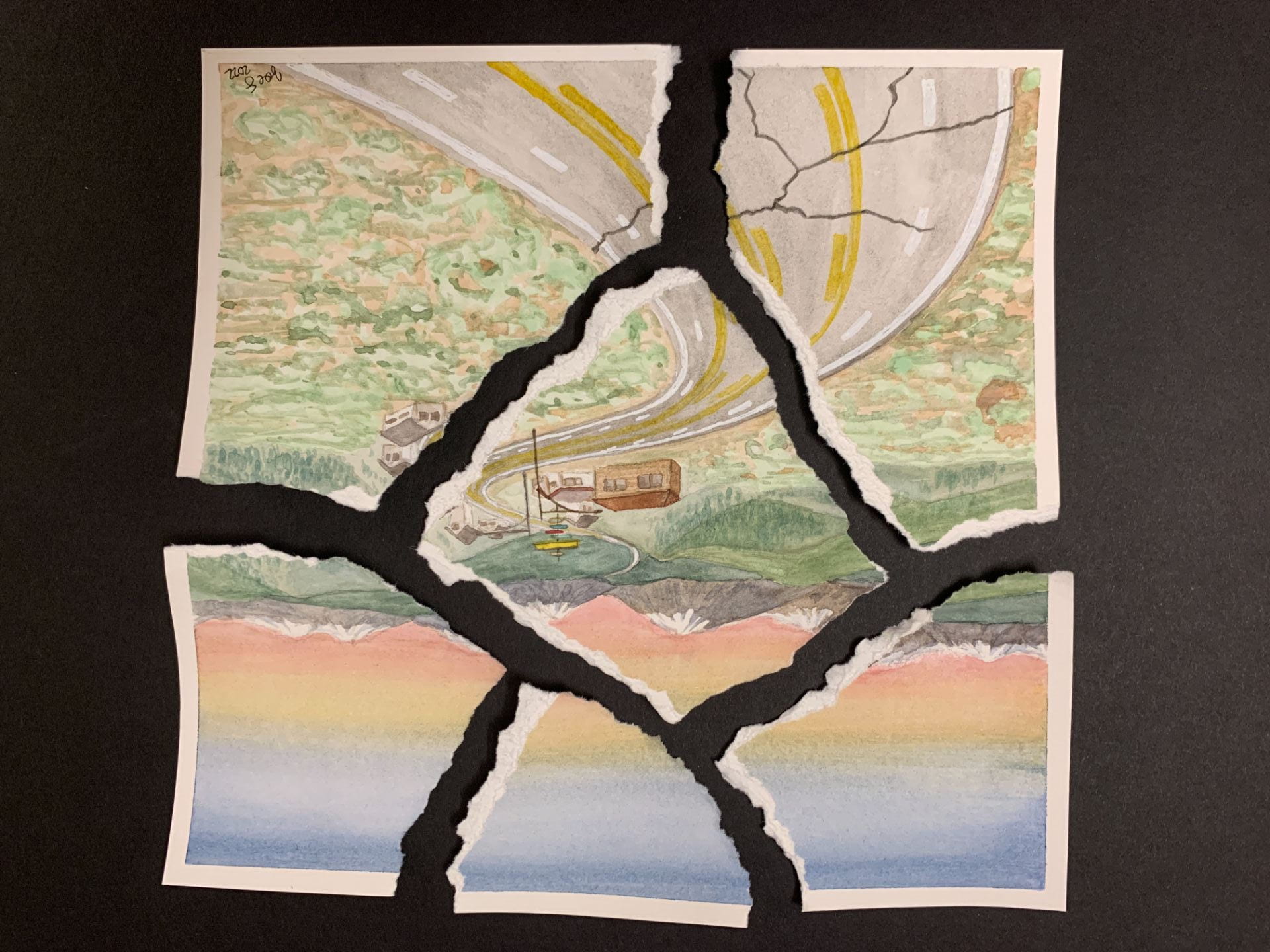In order to break, something once had to be whole / in a mosaic
Sharp cracked edges bring one another to light, make themselves cohesive not in spite of but because of the splits and gaps and shattered spaces between, an art form beautiful because it is broken and put back together
The air always felt still when I grabbed the basketball from the rim of the hoop, brought it down, dribbled twice, and threw it down to the court to my teammate, who years ago had so much to say that we’d drive around the block as many extra times as it took for our conversation to end, always longer than the ten minute drive from home to school
She’d grab the ball running—a fast break—sprinted down the court to the other side, and took two graceful steps to gently toss the ball up into the net. I can still feel the way the cheers poured out of our crowd, yelling, stomping on the bleachers, the PTSO volunteers selling popcorn and hotdogs leaning out of their booth to look at the updated score board
In those days when we held our fists in a circle before any game and yelled break on three, 3,2,1, Tigers on 3,
Break / was what held us together. Molded together, we were pieces made haphazardly cohesive
Molded together: by things like the concrete that artists paste between mosaic pieces, or what it means when you walk back into the locker room after losing by one free throw in overtime, side by side
Last August, I thought that the worn asphalt streets of my town should buckle under the pressure they hold: the tension between staying and leaving. What would it mean for concrete, or a game lost by a single free throw, to span the 2,853 miles between Lee Vining, California and Amherst, Massachusetts?
In Western Massachusetts, red pines and rolling hills pull in the same horizon that stretches seamlessly for miles in every direction in Eastern California, dusty yellow expanse in the west, faded brown embrace in the east.
So what about disparate horizons? Are those
/
Untenable?
I think if basketball can be concrete, maybe distance too can be poured and molded
Weaving, piecing together, making break cohesive
I believe that people carry places with them, and that even broken, the line of the horizon is still traceable
Meaning, I believe in mosaics.
The pavement of Highway 395 can carry you from Hesperia, California to Laurier, Washington. The last time I drove its familiar winds back to Lee Vining, I thought
That maybe break / is what holds me to this place now.
Caelen McQuilkin ’23 is a staff writer
cmcquilkin23@amherst.eduu
Zoe Strothkamp ’24 is a staff artist
zstrothkamp24@amherst.edu
